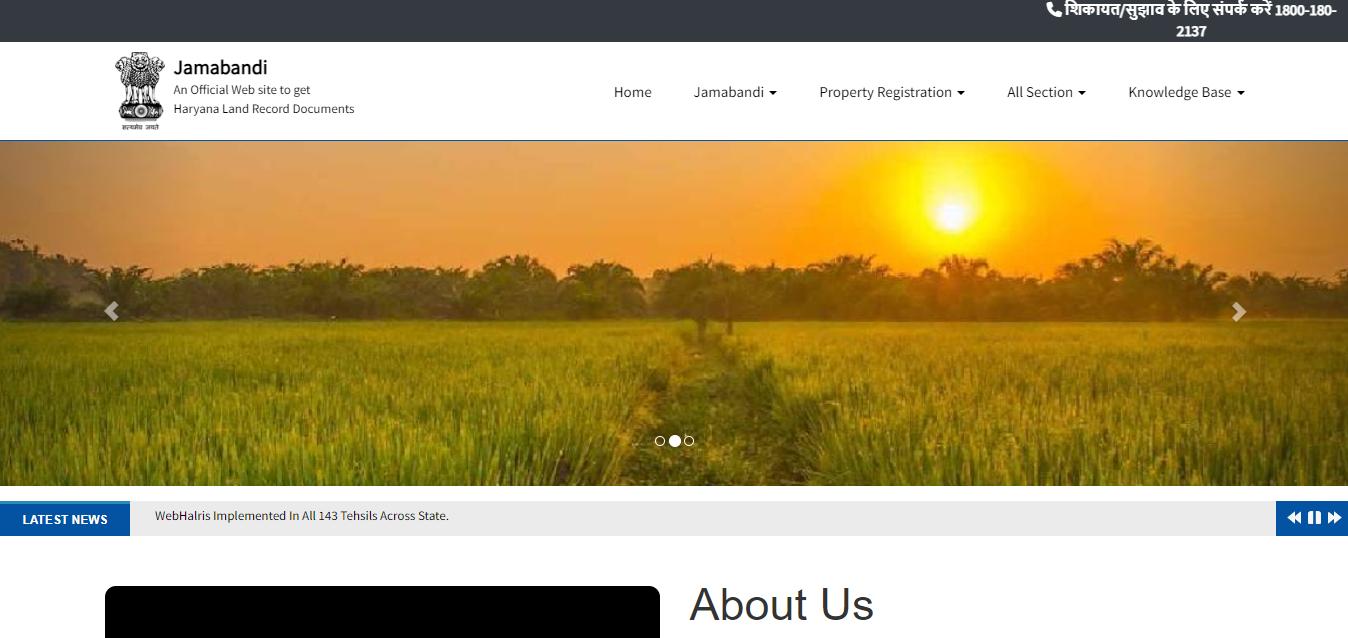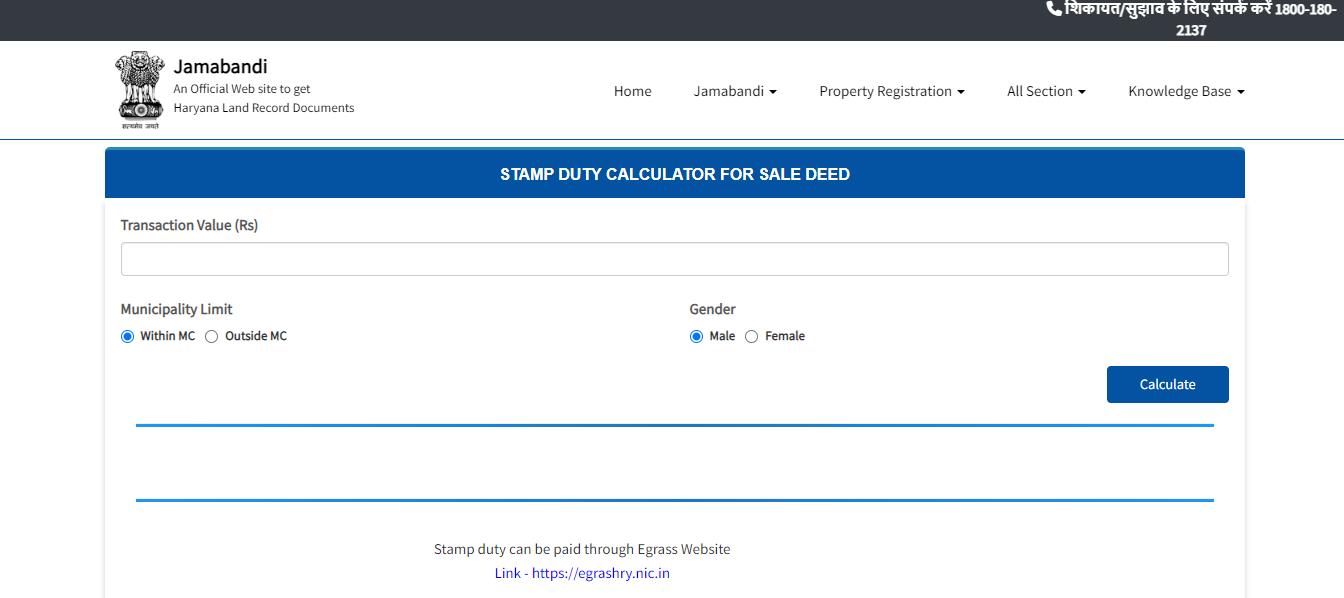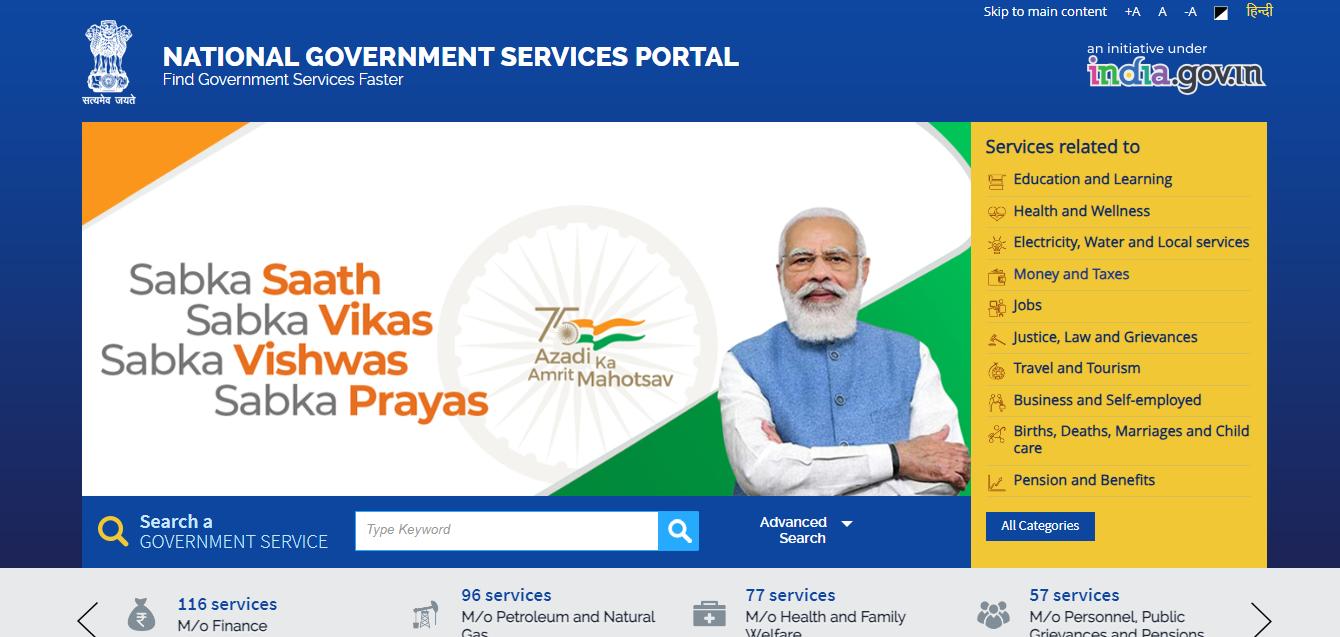



Table of Contents
- Introduction
- Factors Affecting Stamp Duty Rate
- Stamp Duty Rates for Property Transactions in Haryana
- Documents Required for Property Registration in Haryana
- Property Registration Charges in Haryana 2025
- Calculating Registration Charges and Stamp Duty in Haryana
- How to Use Stamp Duty Calculator?
- How to Pay Stamp Duty Online in Haryana?
- How to Pay Stamp Duty Offline in Haryana?
- Points to Consider Before Paying Stamp Duty in Haryana
- Delay in Stamp Duty Payment
- Tax Benefits on Stamp Duty and Registration Charges
- Conclusion
- Faq's
Introduction
Completing a property purchase in Haryana requires adherence to stamp duty and registration charges, without which the process remains incomplete. Potential buyers must acquaint themselves with the government-mandated registration process before proceeding with any property transactions in the region.
In Haryana, the stamp duty rates and registration charges are contingent not only upon the area type but also on the specific type of property deeds involved. Below, we delve into the various stamp duty rates and registration fees applicable for property purchases in Haryana.
Factors Affecting Stamp Duty Rate
1. Property Age: Stamp duty rates are influenced by whether the property is old or new. The age of the property is a key factor considered in determining the applicable stamp duty rate.
2. Jurisdiction: Stamp duty rates vary based on the jurisdiction in which the property is situated. Whether the property falls under urban, rural, or suburban areas plays a significant role in determining the stamp duty rate.
3. Property Usage: The intended usage of the property also impacts the stamp duty rate calculation. Factors such as whether the property will be used for residential, commercial, or industrial purposes are taken into account when determining the applicable stamp duty rate.
These factors collectively contribute to the determination of stamp duty rates in Haryana, ensuring that the charges align with the specific characteristics and circumstances of the property transaction.
Stamp Duty Rates for Property Transactions in Haryana
|
Category |
Urban Areas Stamp Duty |
Rural Areas Stamp Duty |
Registration Charges |
|
Male Buyer |
7% of property value |
5% of property value |
₹50,000 |
|
Female Buyer |
5% of property value |
3% of property value |
₹50,000 |
|
Joint Ownership (Male & Female) |
6% of property value |
4% of property value |
₹50,000 |
Documents Required for Property Registration in Haryana
• Sale Deed: The sale deed is a crucial document that establishes the transfer of ownership from the seller to the buyer. It outlines the terms and conditions of the sale, including the purchase price and property details.
• Buyers' and Sellers' ID Proofs: Both the buyer and seller are required to provide valid identification proofs such as an Aadhar card, passport, driver's license, or any other government-issued identity document.
• Buyers' and Sellers' Address Proofs: Address proofs are essential to verify the residential addresses of both parties involved in the property transaction. Documents like utility bills, Aadhar card, or voter ID cards can be submitted as address proofs.
• No-Objection Certificate (NOC) from the Society: If the property is part of a cooperative housing society or apartment complex, a no-objection certificate (NOC) from the society is required. This certificate confirms that the society has no objection to the sale of the property.
• ID Proofs of Two Witnesses: Two witnesses are required to be present during the registration process, and they need to provide their identification proofs as well. These witnesses attest to the signing of the documents by the buyer and seller.
• Building Plan, Map, etc.: Depending on the nature of the property, additional documents such as building plans, layout maps, and approvals from the relevant authorities may be required. These documents ensure that the property complies with the local building regulations and zoning laws.
• Encumbrance Certificate: An encumbrance certificate is a legal document that confirms that the property is free from any monetary or legal liabilities such as mortgages, liens, or disputes. It is essential to obtain this certificate to ensure a clear title for the property.
• Property Tax Receipts: Copies of property tax receipts for the current fiscal year should be provided to demonstrate that all property taxes have been paid up to date.
• Completion Certificate: For newly constructed properties, a completion certificate issued by the local municipal authority is necessary. This certificate verifies that the construction has been completed according to the approved plans and regulations.
• Occupancy Certificate: In the case of completed buildings, an occupancy certificate issued by the local authority is required. This certificate confirms that the building is safe for occupation and complies with all the necessary regulations.
Property Registration Charges in Haryana 2025
|
Property Value Range |
Registration Fee |
|
Up to Rs 50,000 |
Rs 100 |
|
Rs 50,001 to Rs 5 lakh |
Rs 1,000 |
|
Rs 5-10 lakh |
Rs 5,000 |
|
Rs 11- 20 lakh |
Rs 10,000 |
|
Rs 21-25 lakh |
Rs 12,500 |
|
Exactly Rs 25 lakh |
Rs 15,000 |
|
Rs 25-40 lakh |
Rs 20,000 |
|
Rs 40-50 lakh |
Rs 25,000 |
|
Rs 50-60 lakh |
Rs 30,000 |
|
Rs 61-70 lakh |
Rs 35,000 |
|
Rs 71-80 lakh |
Rs 40,000 |
|
Rs 81-90 lakh |
Rs 45,000 |
|
Rs 91 and above |
Rs 50,000 |
In 2018, the Haryana government implemented a significant increase in property registration charges, raising them to Rs 50,000, contingent upon the property's collector rate. Prior to this revision, the state levied a maximum registration fee of Rs 15,000 only. The revised charge is applicable across various property transaction documents including sale deeds, gift deeds, mortgage deeds, sale certificates, lease deeds, collaboration agreements, exchange deeds, partition deeds, and settlement deeds.
Calculating Registration Charges and Stamp Duty in Haryana
Stamp Duty Calculation:
In Haryana, stamp duty is computed based on the circle rate of the locality where the property is located. If the property's value exceeds the circle rate, the stamp duty increases accordingly. Conversely, if the property is registered at a value lower than the circle rate, stamp duty is calculated based on the circle rate.
For instance:
• Circle Rate: ₹ 60,000 per square meter
• Flat Size: 1,500 square meters
• Total Value: ₹ 9,00,00,000
Stamp Duty Calculation:
Stamp Duty = 5% of ₹ 9,00,00,000
= ₹ 4,500,000
Therefore, the stamp duty payable for this property transaction in Haryana amounts to ₹ 4,500,000.
Registration Charges Calculation:
Registration fees in Haryana are typically 1% of the property cost.
For example:
• Property Cost: ₹ 20,00,000
Registration Fees:
Registration Fees = 1% of ₹ 20,00,000
= ₹ 20,000
Thus, the registration fees for a property valued at ₹ 20,00,000 in Haryana would be ₹ 20,000.
How to Use Stamp Duty Calculator?
To utilize a stamp duty calculator, prospective buyers can conveniently access the Haryana Jamabandi website: https://jamabandi.nic.in/defaultpages/default

• Enter Property Transaction Value: Begin by entering the transaction value of the property into the designated field.
• Select Municipality Limit: Choose the appropriate Municipality Limit corresponding to the property's location from the available options.
• Specify Gender: Indicate the gender of the buyer or relevant parties involved in the transaction.
• Calculate: Click on the "calculate" button to initiate the computation process.

By following these simple steps on the Haryana Jamabandi website, users can swiftly determine the accurate stamp duty amount applicable to their property transactions.
How to Pay Stamp Duty Online in Haryana?
For online registration of stamp duty and registration charges in Haryana, buyers can follow these steps:
• Visit the Official Website: Access the National Government Service Portal's official website: https://services.india.gov.in/

• Navigate to Haryana e-Stamping: Click on the Haryana e-Stamping option available on the portal.
• Enter First Party Details: Fill in the necessary details of the first party, including the individual responsible for paying the stamp duty, as well as the property address in the designated column.
• Provide Party Names: Input the names of both the first and second parties involved in the transaction.
• Select Stamp Paper Category: Choose the appropriate category of stamp paper from the provided list, and then select the desired amount.
• Review and Confirm: Take a moment to review the filled form for accuracy. Once satisfied, proceed to finalize the payment.
By following these straightforward steps on the National Government Service Portal's website, buyers can efficiently complete the process of paying stamp duty online in Haryana.
How to Pay Stamp Duty Offline in Haryana?
One traditional approach to paying stamp duty involves personally visiting the Sub-Registrar's Office. Here, individuals can complete the payment process in person. The procedure typically entails the following steps:
• Visit the Sub-Registrar's Office: Begin by visiting the Sub-Registrar's Office in person.
• Verification of Property Details: Upon arrival, the concerned officials will verify the details of the property and determine the applicable stamp duty amount.
• Submission of Required Documents: Once the property details are verified, individuals need to submit the necessary documents along with the stamp duty payment.
• Payment Process: At the designated counter, individuals can proceed to make the stamp duty payment. Payment can typically be made in the form of a demand draft or cash, adhering to the office's prescribed guidelines.
By following these steps and visiting the Sub-Registrar's Office, individuals can fulfill their stamp duty obligations through the traditional offline method.
Points to Consider Before Paying Stamp Duty in Haryana
Before proceeding with stamp duty payment in Haryana, it's essential to consider the following points:
• Timely Stamping: All properties subject to stamp duty must be appropriately stamped before registration or on the next working day following the execution date of the property deed. For deeds executed outside the state's territory, stamping should be completed within three months. Execution, in this context, refers to the signatures of both parties involved in the transaction.
• Stamp Paper Ownership: Ensure that the stamp paper is issued in the name of the individuals engaged in the transaction. This helps maintain clarity and legality throughout the process.
• Validity Period: Verify that the date of issuance on the stamp paper does not exceed six months from the transaction date. It is crucial to use stamp papers within their validity period to avoid any complications during registration.
• Adhesive Stamp Usage: Stamp duty in Haryana can be paid through adhesive stamps. These stamps are affixed to the relevant documents during execution and are designed to prevent reuse. Adhering to this requirement ensures the integrity and authenticity of the stamp duty payment process.
By keeping these points in mind, individuals can ensure compliance with stamp duty regulations in Haryana, facilitating smooth and legally sound property transactions.
Delay in Stamp Duty Payment
As delineated in Section 23 of the Registration Act 1908, it is incumbent upon individuals involved in property transactions to present relevant documents within a timeframe of four months from the execution date of the deed. This stipulation aims to ensure the timely registration of property transactions, thereby safeguarding the integrity and legality of such dealings.
Should there be any delay in the submission of documents beyond the prescribed four-month period, consequences may ensue in the form of penalties. As per the statutory provisions, the penalty for such delays can extend up to 10% of the registration charges applicable to the transaction.
These penalties serve as a deterrent against procrastination in fulfilling registration obligations, emphasizing the importance of adherence to statutory timelines in property transactions. It is imperative for individuals engaging in such transactions to be mindful of these provisions to avoid incurring penalties and any associated legal ramifications.
Tax Benefits on Stamp Duty and Registration Charges
Yes, there are indeed tax benefits available on stamp duty and registration charges. According to Section 80C of the Income Tax Act 1961, expenses incurred towards stamp duties and registration charges are eligible for tax deduction. The maximum deduction limit for this criteria is Rs 1,50,000.
Here are some important points to consider while applying for these tax benefits:
• Tax benefits can only be claimed in the year when the actual payment is made towards these expenses.
• The construction of the property should be completed, and you must be the legal owner of the property to avail of these benefits.
• Tax benefits are applicable only to new residential properties. Therefore, properties such as commercial real estate, residential plots, and related assets are not eligible for these tax deductions.
• In cases of joint ownership, tax deduction eligibility for co-owners is determined based on their respective shares in the property. However, the maximum deduction limit remains consistent at Rs 1,50,000.
• Purchasing a property represents one of the most significant financial decisions for individuals. However, lacking legal evidence of property ownership can leave it vulnerable. Stamp papers serve as a solution to this
Conclusion
In conclusion, understanding the dynamics of stamp duty and registration charges is pivotal for property buyers in Haryana. By grasping the factors influencing stamp duty rates and familiarizing themselves with the charges applicable to different property deeds, individuals can ensure a seamless transaction process. Moreover, adhering to essential considerations such as timely stamping of documents, verifying stamp paper ownership, and complying with validity periods, enhances the legal integrity of property transactions.
Furthermore, being aware of potential penalties for delays in stamp duty payment and leveraging available tax benefits underscores the importance of thorough comprehension and adherence to legal requirements. Overall, by staying informed and diligently following the prescribed procedures, property buyers can navigate the complexities of stamp duty and registration charges in Haryana, facilitating smooth and legally sound property transactions
explore further
Latest from Home Buying Tips
More from Recommendations
Resources
Dwello, for every home buyer, is a way to go from 'I feel' to 'I know', at no extra cost.




